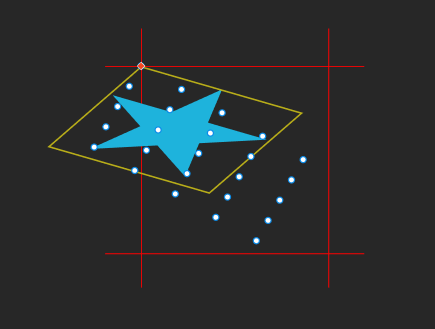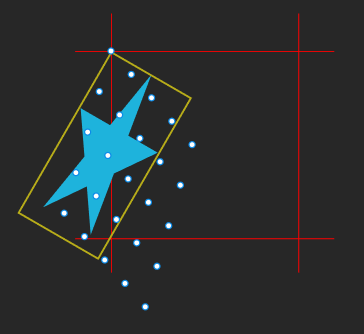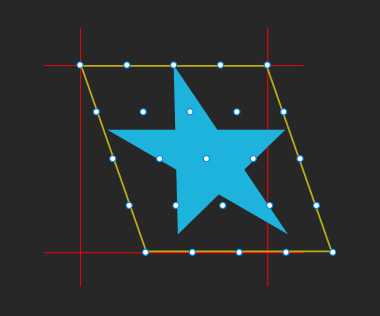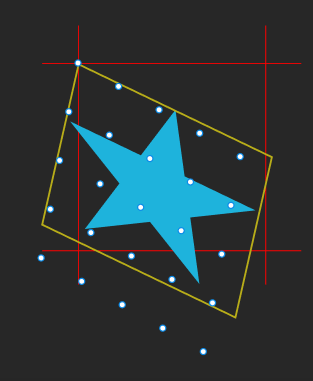Can you please share the code you used for these examples?
Sure, it’s just basic transform code.
The transform function is
function applyTransform(obj, xform)
{
// add to object's "total" transformation
obj.xform = mulm3m3(obj.xform, xform);
// apply only this transformation to the position (only for points)
const p = mulv2m3(
point(obj.x, obj.y),
xform);
obj.x = p.x;
obj.y = p.y;
}
and the transforms are
applyTransform(obj, // move
[[1, 0, x],
[0, 1, y],
[0, 0, 1]]);
applyTransform(obj, // scale
[[sx, 0, 0],
[0, sy, 0],
[0, 0, 1]]);
applyTransform(obj, // rotate
[[ Math.cos(angle), Math.sin(angle), 0],
[-Math.sin(angle), Math.cos(angle), 0],
[ 0, 0, 1]]);
applyTransform(obj, // skew
[[1, sx, 0],
[sy, 1, 0],
[0, 0, 1]]);
Then, when it comes to actually updating the objects, I have two functions:
// figObj is the Figma object I'm updating, this is what is coming out wrong
// genObj is the generated object that I calculated
function setObjectTransform(figObj, genObj) // called for objects
{
// make axis vectors == 1
const scaleX = Math.sqrt(sqr(genObj.xform[0][0]) + sqr(genObj.xform[1][0]));
const scaleY = Math.sqrt(sqr(genObj.xform[0][1]) + sqr(genObj.xform[1][1]));
genObj.xform[0][0] /= scaleX;
genObj.xform[1][0] /= scaleX;
genObj.xform[0][1] /= scaleY;
genObj.xform[1][1] /= scaleY;
// do magic to make object transform correctly ???
figObj.resizeWithoutConstraints(
Math.max(0.01, genObj.width * scaleX),
Math.max(0.01, genObj.height * scaleY));
figObj.relativeTransform =
[
genObj.xform[0],
genObj.xform[1]
];
}
function setPointTransform(figPoint, genPoint) // called for points
{
figPoint.resizeWithoutConstraints(0.01, 0.01);
figPoint.x = genPoint.x;
figPoint.y = genPoint.y;
// no transform here, points are already transformed at every step
// so here I only care about their positions
}
mulm3m3() and mulv2m3() multiply vectors and matrices as their names imply.
So, every time I do a transformation, I update the object’s xform member (my own internal 3x3 matrix), but I also use just the current transformation to transform the object’s position.
On the Figma side, I use the transform if it’s an object and .x and .y if it’s a point. This way the points arrive correctly transformed and I can use them to test object transformation. Right now the result is not the same.
Maybe I’m not understanding the matrix thing correctly. Can’t I just have a complicated compound “final” transform applied to an untransformed object and have it do all the transformations in correct sequence?
Or, now that I think about it some more, do I have to keep an array of transformations, and then resize/transform/skew the object once for each transformation?
An animation shows what is happening much better:
As you can see, the points are doing what they’re supposed to, while the object is not.
Thank you for the details! It seems like this is too complex for me to figure out, I hope someone smarter will be able to help. 🤓
I’m now also very curious about this thing: is this a plugin you are building? Or a widget, I guess? Looks very intriguing! I’d love to learn more if you can share the details.
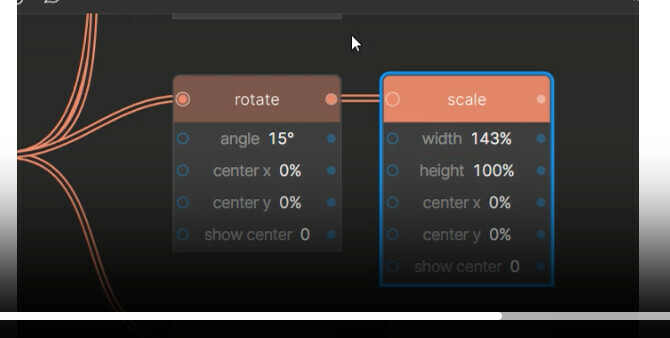
It’s my plugin Generator (https://www.figma.com/community/plugin/899028246731755335), I’ve always planned for it to have geometry nodes, just now getting around to work on them.
You can see how it works here: https://twitter.com/brainshift_/status/1653677256504475651
But I want to keep objects as themselves as much a possible (keep text editable etc), and the transformations are stumping me a bit. Hope someone can help. 🤷
Oh yes I’ve seen it when it was just released, it evolved quite a lot! 😍 Amazing work!
I’ve shared this post in the Figma Discord for visibility, hopefully someone can help.
Thanks for the kind words! 😀
